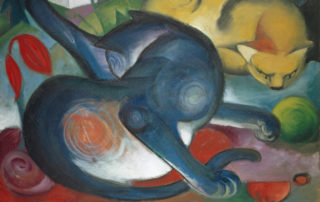Seven Murals by Philip Orenstein (b. 1938)
A French-Jewish Perspective on France During World War II
Philip Orenstein and Dr. Nadine M. Orenstein in conversation
Inspired by a visit to his birth country in the 1990s, American artist Philip Orenstein (b. 1938) created seven murals about the French complicity in the persecution of Jews in France during World War II. At that time, the French government had not admitted it had taken part in the persecution. The murals have been shown in various galleries and museums in the United States. In 1999, William Zimmer wrote in the New York Times, “Mr. Orenstein’s method involves combining poignancy with the determination that the viewers not miss the story. To this end, Mr. Orenstein skillfully, and wittily, employs the look of today’s splashy graffiti.” The works have not yet been shown in France. Born in Paris, France, in 1938, [...]




